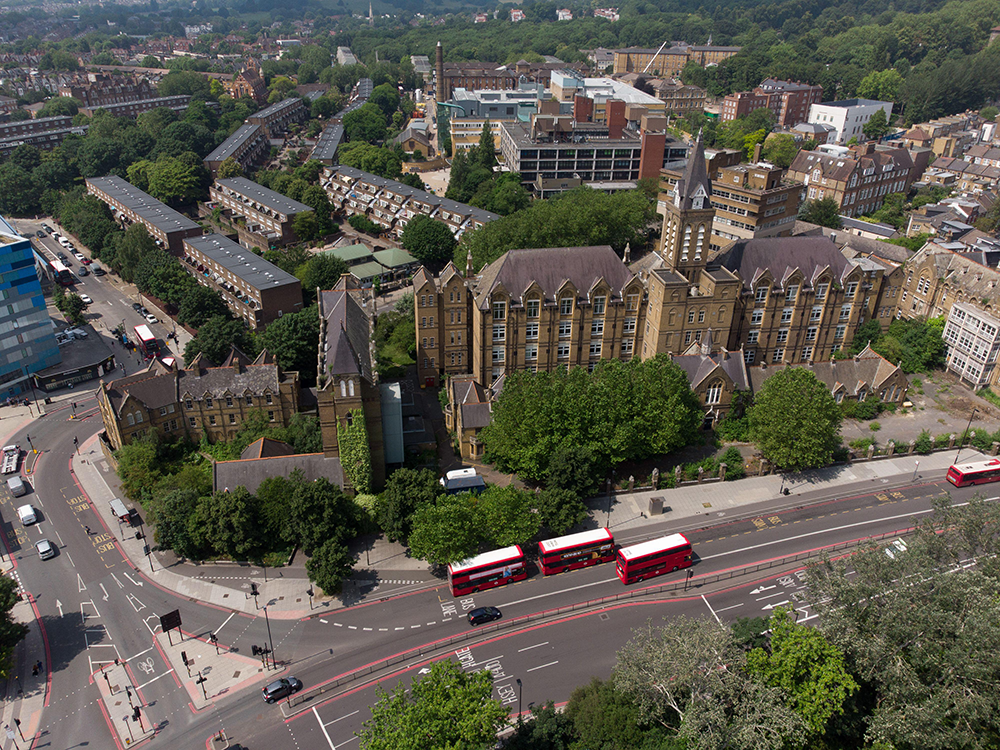
Britain’s heritage is slowly going up in smoke. Medlock Mill was Manchester’s oldest standing textile mill until it burnt down in June. It joins Grade I-listed Woolton Hall – destroyed by a catastrophic fire in August. But it’s not just the buildings that are under threat, but the entire system designed to protect them.
Prior to the disaster, the architect Stephen Hodder had proposed gutting the mill and converting it into a 37-storey block of student flats. A coalition of concerned citizens and conservation charities fought for a stay of execution by applying for the mill to be listed. After reviewing new archaeological evidence, Historic England concurred and recommended it for Grade II. In January, in a ‘highly unusual’ decision, the Culture Secretary Lisa Nandy threw the application out.
With potential evidence having been ‘destroyed in the blaze’, Greater Manchester Police abandoned their criminal investigation. A requested review of the culture secretary’s decision was likewise aborted. What remains is evidence of an alarming trend, of the government overruling Historic England, its own statutory adviser, and creating a ‘hostile environment for heritage’, lumping vital protections in with other irritating ‘blockers’ to building.
The numbers don’t lie. My freedom of information request shows that, over the past ten years, there have been 14 cases where the Department for Culture, Media & Sport has rejected Historic England’s recommendations to list buildings. Eight – more than half – of these cases have happened under the last year and a half of Labour rule. It has ignored Historic England’s specialist advice ten times more often than the previous government, with many buildings of national importance thrown on to the pyre.
Labour is, in fairness, an equal opportunities offender: buildings of all historical periods have been sacrificed on the altar of ‘build, baby, build’. Medlock Mill happens to be the oldest of these. The most historic parts date back to 1794 or 1801, and, by Historic England’s assessment, it may be ‘the only known standing mill in the country’ with surviving evidence of hybrid ‘steam-assisted water power’, a milestone in the Industrial Revolution prior to the sole adoption of steam technology. Despite its unequivocal list-worthiness, a technicality over the mill’s precise age was enough for the Secretary of State to reject it, on the whimsical mantra that ‘some selection is necessary’. For Anya Lucas, the director of the Georgian Group (which helped campaign for it to be saved), Nandy’s ‘refusal to explain or cite substantive evidence for this inconsistent decision risks undermining confidence in the whole listing process’.
Buildings of all historical periods have been sacrificed on the altar of ‘build, baby, build’
A later 19th-century victim is the north London landmark Holborn Union Infirmary, a muscular Gothic complex designed by Henry Saxon Snell. Its layout combines ‘pavilions’, the pioneering open-plan wards influenced by Florence Nightingale, and Saxon Snell’s own variations. It was a time when architects were still exploring what the ideal hospital design would be, and this was ‘the earliest and most experimental of [Saxon Snell’s] buildings to survive’, according to Historic England. In a backwards logic, its uniqueness, that it ‘did not inspire imitators’, was seized on for rejection. James Hughes, the director of the Victorian Society, points out that the government’s cherrypicked reasons have already been ‘carefully weighed up by Historic England’. Listing was never about preserving the buildings in aspic, but to ‘increase the likelihood of a sympathetic redevelopment’ by providing clear, considered guidelines over what is worthy of protection. It advised against listing less valuable parts, for example.

Not even progressive modern architecture is safe. The first casualty of this government is the newest: Stansted airport, designed by Norman Foster and completed in 1991. Ignore the budget-airline clutter that came much later; Stansted remains one of the world’s most important airport designs. Its organisation was lucid, hiding away services in its underbelly, leaving the concourse airy and naturally lit. The roof, meanwhile, was held up by a modular grid of structural ‘trees’ that allowed the terminal to ‘grow gracefully’, argues Oli Marshall from the Twentieth Century Society. It set a benchmark for airport architecture globally. While Marshall acknowledges the need to ‘allow maximum operational flexibility’ for airliners, he says that, under current rules, ‘they could have listed the terminal roof structure and excluded everything else beneath, as a pragmatic response’. Instead, the baby was thrown out with the bathwater, with the government concluding that ‘the terminal as a whole has no special architectural or historic interest’.
Then there is Bath fire station, commissioned in 1937 in anticipation of an aerial war. A building that helped defend the city in the Baedeker Blitz, during which Britain’s heritage sites were willfully targeted. It remains a precious example of how to design with freshness and sensitivity, deftly combining classical motifs and art-deco stylings, within a city that is brimming with beauty. My favourite touch is the classical drill tower, evoking the elegant taper of Lutyens’s Cenotaph. Yet all this, and the fact that it’s the country’s only fire station to have been designed by a female architect, Molly Gerrard, is ‘not sufficiently special’ for Labour ministers. Twentieth Century Society’s director Catherine Croft is left asking: ‘On what basis are they making that judgment? Why does the government feel that it knows more than its own specialist advisers?’
‘Why does the government feel that it knows more than its own specialist advisers?’
In Bath, the fire service – with the tacit approval of the government – are doing what the Luftwaffe didn’t quite manage to and demolishing the entire thing for reasons that include ‘facilities failing to meet diversity and inclusion standards’. As an alternative, architects BDP propose to strip the old station for parts and build a replacement (veneered in token Bath stone) so shockingly ugly that it may even inspire feelings of arson in a firefighter.
DCMS claims all these decisions have been made on architectural or historic-interest grounds alone. Yet everyone can connect the dots: these buildings were all facing redevelopment.
In a pincer movement, the Planning Secretary – who decides the prominence of economic factors in the development process – is also sidelining advisers on heritage, through an underhand review of statutory consultees. Facing the firing line in the impending review is the Gardens Trust, the charity that provides overstretched planners with otherwise scarce advice on listed parks and gardens. The government suggests the Trust is a ‘barrier to growth’ and needs removing. Linden Groves, the Trust’s director, rebuts this: ‘The very few number of objections we’ve made last year touched on just over a thousand new dwellings’ – a drop in the ocean. ‘We’re pro positive development; our suggestions encourage developers to celebrate the high-quality, mature green space that already exists, instead of building over it and substituting inferior replacements.’
Sacrificing our cultural inheritance for Labour’s increasingly untenable 1.5 million housing target is a false economy. Manifesto promises come and go but these historic places rely on each generation passing on the baton. When we live up to this duty, the benefits are self-evident. The Grade I-listed Becksford’s Tower, another Bath landmark, had been languishing for years on the growing Heritage at Risk Register. Unlike the fire station, where decline became an excuse for demolition, an unrelenting, united community rescued it from the brink, earning it a Lottery Heritage grant and a top Georgian Group award for the architects’ resuscitative interventions, including opening up a once-hidden grotto, that injected millions into the economy and gave back Bath a visitor destination worthy of its World Heritage status.
The government can still put out the flames. It risks otherwise adding to Labour’s record of heritage crimes – from turning the grand Wentworth Woodhouse into an opencast coal mine to Tessa Jowell’s suggestion that listed buildings could be demolished once ‘a perfect virtual moving image’ of them had been made digitally. We were forewarned when Angela Rayner declared that ‘beautiful means nothing really’. Let’s hope our eyes never have to behold the consequences.








Comments